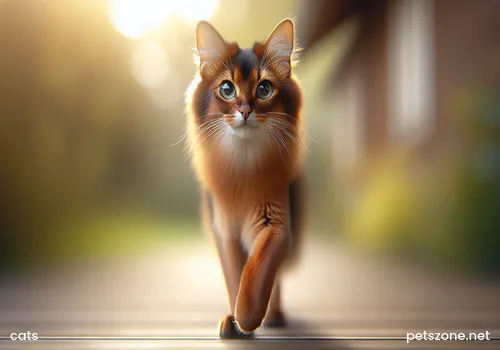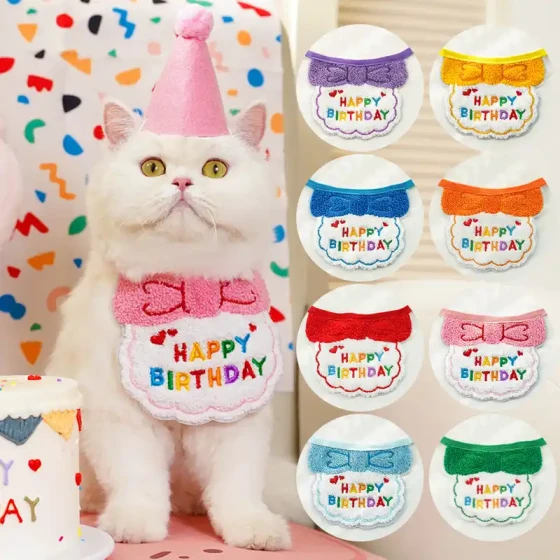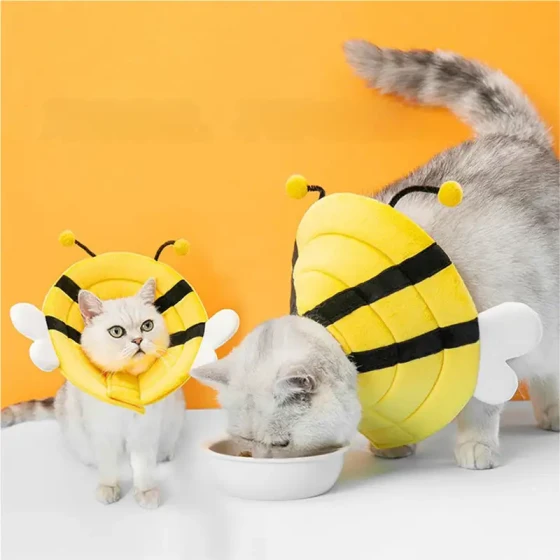Cat’s supernatural phenomena_Why cats are said to be especially sinister and mysterious
Cats, these common animals in our daily life, are sometimes lazy and noble, sometimes lively and playful, but they always carry a mysterious aura that makes people feel they seem to hide unknown secrets. Many even feel that cats are particularly "sinister," full of supernatural undertones. So why do people have this feeling?

Actually, rather than saying cats are "sinister" or "supernatural," it’s more accurate to say their behaviors and sensory abilities exceed human understanding, combined with various legends and symbolic meanings in history and culture, which cloak them with a veil of mystery. Cats possess hearing, smell, and night vision abilities sharper than humans, allowing them to perceive environmental changes that we cannot detect.
Mysterious behaviors of cats and scientific explanations
Many seemingly mysterious cat behaviors can actually be explained scientifically.
- Staring blankly at corners or the ceiling: Many cat owners have seen their cats staring at some spot in the house for a long time without moving, as if there is some "unclean thing" there. But this is likely because cats hear high-frequency sounds inaudible to humans, or see tiny insects or dust floating in the air. Their keen hearing and vision allow them to catch these details. Furthermore, cats’ eyes can perceive parts of ultraviolet light, which may also explain why they sometimes stare at seemingly empty spaces.
- Sudden nighttime "parkour": Some cats suddenly run wildly inside the house at night, usually because they have slept well during the day and need to release energy at night. As natural hunters, cats are more active at dusk and dawn; domestic cats retain this biological clock and thus engage in "indoor hunting" and play at night.
- Being especially alert or avoiding certain areas: Cats have strong territorial awareness and mark their territory through scent. When feeling uneasy or detecting unfamiliar smells, they may display alertness or avoidance. This behavior is an instinct for self-protection.
- Squishing into small spaces: Cats seem to have a special fondness for boxes and cramped spaces, trying to squeeze in even when their bodies barely fit. This is because small spaces give them a sense of security, making them feel wrapped and hidden, relating to their dual identity as predators and prey.
- “Tucking in paws”: Sometimes cats tuck their paws under their bodies in a “tucked paws” posture. This usually indicates relaxation and comfort, and also helps keep warm.
- Purring: Cats purr generally to express satisfaction and relaxation, but they also purr when tense or in pain, which is considered a self-soothing and healing mechanism.
Symbolic meanings of cats in different cultures
The mysterious aura of cats is also reflected in the symbolism different cultures assign to them.
- Ancient Egypt: In ancient Egypt, cats were regarded as sacred animals and worshipped. They were associated with the goddess Bastet and seen as protectors of the home, bringing good luck and protection. Killing a cat in ancient Egypt was a serious crime.
- Medieval Europe: In contrast to ancient Egypt, in medieval Europe, cats (especially black cats) were often associated with witches and evil, considered incarnations of the devil, and linked to many negative superstitions.
- Traditional Chinese culture: In China, cats have multiple symbolic meanings. Because "cat" (猫) is a homophone of "old age" (耄), cats often symbolize longevity, especially in paintings where cats appear with butterflies (a homophone of elderly years), representing “long life.” Cats are also considered symbols of wealth. In some folk tales, different fur colors of cats are assigned different "wealth values." On the other hand, Chinese folklore also includes "cat ghosts," thought to be spirits that harm people and seize wealth, reflecting a complex and sometimes negative image of cats in folk belief. The legend of cats having nine lives also circulates in China; one interpretation symbolizes cats’ resilient vitality and their “nine lifetimes of memory for hatred,” another relates to Buddhist stories, viewing the nine lives as representing cats’ spirituality.
- Japanese culture: In Japan, cats are symbols of luck and wealth, the most representative being the "Maneki-neko" (beckoning cat). Cats are also believed to ward off evil spirits and bring good fortune. Cats appear widely in Japanese folk stories, art, and modern anime, and even have their own holiday—"Cat Day" (February 22).
Scientific interpretation and folklore of "supernatural phenomena"
Regarding cats’ "supernatural phenomena," the most widely known belief is that cats should not be allowed near corpses during wake-keeping. Folk tales say that if a cat jumps over a corpse, it may cause the corpse to "rise." This sounds very mystical. However, science offers another explanation. One theory posits that static electricity on cats’ fur might stimulate the corpse’s nerves when the cat jumps over it, causing brief muscle reactions that lead to limb movements, misunderstood as "resurrection" rather than any supernatural force.
Cats staring at you can sometimes make you feel uneasy, as if they can see through your thoughts. In fact, cats use eye contact to express emotions and needs. Long staring might show curiosity, trust, or be a way to communicate what they want (such as food or play).
Cats are considered mysterious largely because their communication methods differ from humans. We cannot understand their behaviors and sounds as directly as human language, and this information gap amplifies their mystery. However, by observing cats’ body language, vocalizations, and behavioral patterns, we can gradually learn their "cat language" for better understanding these adorable little creatures.
Frequently Asked Questions
Do cats really have nine lives?
Scientifically, cats have only one life like all living beings. The saying "cats have nine lives" is a long-standing folklore, possibly arising from cats’ excellent physical qualities, agility, and ability to escape danger.
Can cats see ghosts?
Currently, there is no scientific evidence that cats can see ghosts or supernatural beings. Cats staring at empty spaces may be because they see or hear tiny movements or high-frequency sounds undetectable to humans, or because their excellent night vision allows them to see things invisible to us in low light.
Why do some cats seem particularly "sinister"?
This is usually due to misunderstandings of cat behavior and the influence of cultural legends. Cats’ independent, alert, elusive nature, and their nocturnal habits easily give people a feeling of mystery or even "sinisterness." Some cultural legends linking cats to negative things deepen this impression.
Conclusion
The mystery of cats does not come from any supernatural powers but from their unique physiology, behavioral patterns, and the rich cultural symbolism humans have given them. Their keen senses, independent personalities, and cryptic "cat language" collectively create their charming mystery. Rather than fearing or misunderstanding cats’ "supernatural phenomena," it’s better to approach them with curiosity, and you’ll find these furry little creatures are actually wise and emotional companions. As many cat-loving literati express, this mystery might be precisely what makes cats so captivating.



